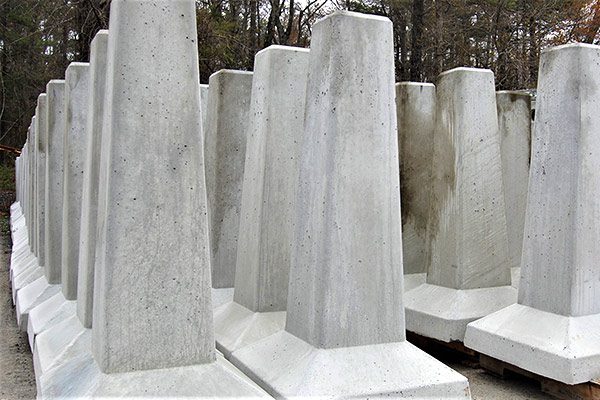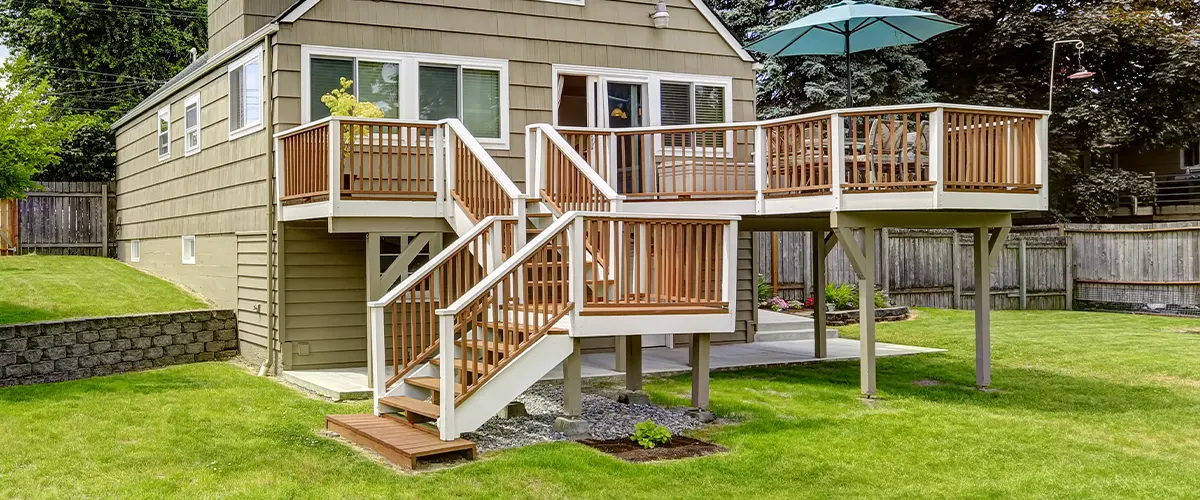From Idea to Concrete: The Critical Role of Deck Footings in Sturdy and Safe Decks
Wiki Article
Maximize the Lifespan of Your Deck With Strong and reputable Grounds
As homeowners, we invest a substantial amount of time and sources into producing the excellent outdoor room. A deck is frequently the focal point of that space, offering a location to unwind, delight, and delight in the elegance of nature. In order to fully make the most of the life expectancy of your deck, it is critical to ensure that it is built on solid and trusted footings. These footings create the foundation of your deck, giving security and assistance, and are commonly the distinction between a deck that lasts for years and one that needs consistent fixings. In this conversation, we will certainly check out the value of reputable grounds, the different kinds of solid footing products, proper installment techniques, and just how to maintain and evaluate your deck's footings to protect against damage. Whether you are in the process of developing a brand-new deck or looking to boost the longevity of your existing one, join us as we reveal the secrets to a deck that stands the test of time.Significance of Trustworthy Grounds
When it comes to optimizing the life-span of your deck,The significance of reliable grounds can not be overstated. The footings function as the foundation whereupon the whole structure relaxes, supplying security and support. Without a strong footing, the deck is at risk to shifting, sinking, and also collapse, which can significantly lower its lifespan and present safety and security threats.

Picking the ideal kind of footing is additionally vital. The most usual types consist of concrete grounds, helical piers, and sonotubes. Elements such as dirt conditions, environment, and the dimension of the deck will determine one of the most appropriate alternative. Employing a professional to analyze the dirt, layout the grounds, and make certain appropriate installment is extremely advised.
Purchasing dependable grounds might include additional expense and initiative upfront, but it is a beneficial financial investment that will add to the long-term resilience and safety of your deck. By guaranteeing a strong foundation, you can appreciate your deck for several years ahead, understanding that it is built to endure the test of time.
Kinds Of Strong Ground Products
To make sure the stability and durability of your deck, it is important to think about the various kinds of solid footing materials offered. The selection of footing product is important as it offers the necessary assistance and stability to withstand the weight and lots of the deck framework.One reliable and usual product used for deck grounds is concrete. Concrete grounds are durable and give exceptional stability. They can be put directly right into the ground or utilize precast concrete footings for much easier installation. An additional choice is helical piers, which are steel shafts with helical plates that are screwed into the ground. These piers use excellent load-bearing ability and can be used in numerous soil conditions.
For areas with inadequate soil problems, such as loose or large soils, a ground system that utilizes steel or composite piers might be liked. Deck Footings. These piers are driven deep into the ground to reach steady soil layers, ensuring the stability of the deck
Sometimes, deck footings can also be created using treated lumber. It is vital to ensure that the lumber is correctly dealt with to stand up to rot and degeneration caused by exposure to wetness and bugs.
When picking a ground product for your deck, it is important to think about factors such as soil conditions, climate, and regional building regulations. Consulting with a professional specialist or architectural designer that site can aid figure out one of the most suitable footing product for your details deck task.
Correct Setup Techniques for Footings
Thinking about the value of making certain security and durability for your deck, it is important to comprehend the appropriate setup methods for footings. The success of your deck project counts greatly on the honesty of its structure, which is why complying with the right setup methods is important.Firstly, it is required to identify the suitable size and depth of the footings based on the design and tons requirements of your deck. This information can be obtained from constructing codes or through consultation with an architectural designer. As a basic regulation, grounds need to be at the very least 12 inches in size and prolong below the frost line to avoid changing or resolving.
As soon as the dimensions are established, the following step is excavation. Digging the holes for the grounds ought to be finished with precision, making certain they are deep sufficient and have a level base. Deck Footings. This will provide a steady base for the footings
To further boost the stability of the footings, it is advised to utilize a concrete mix with a toughness of at least 3,000 psi. This will make sure the footings can stand up to the weight and forces applied by the deck.
During installation, it is necessary to keep the grounds level and aligned appropriately. This can be achieved by using a degree and string lines to guide the positioning of each footing.
Keeping and Inspecting Your Deck's Grounds
Regular upkeep and extensive inspections are crucial for making sure the long-term security and safety of your deck's grounds. In time, grounds can succumb to damage, weather, and useful site dirt activity, which can compromise their architectural integrity. To make the most of the life-span of your deck's footings, it is critical to implement a routine upkeep routine and conduct thorough inspections.
Furthermore, it is crucial to check grounds for any type of indicators of damage or degeneration. This includes checking for splits, splits, or falling apart concrete, along with any indications of movement or settlement. Any type of concerns ought to be resolved quickly to protect against additional damages and guarantee the security of the deck.
Furthermore, it is suggested to evaluate the surrounding dirt for any kind of indications of disintegration or changing. Soil motion can affect the security of the footings, so it is necessary to deal with any kind of soil-related problems without delay.
Signs of Ground Damages and Just How to Address Them
Footing damage can position severe threats to the stability and safety and security of your deck, making it vital to promptly identify and attend to any indications of damage. One of the most typical indications of footing damages is sinking or working out of the deck. This can take place as a result of dirt disintegration, inadequate footings, or poor building methods. If you see that your deck is irregular or leaning, it is critical to take prompt activity to stop further damage. An additional indicator of footing damages is fracturing or crumbling of the concrete grounds. This can be created by freeze-thaw cycles, too much dampness, or bad high quality concrete. If you observe any type of fractures or wear and tear in the footings, it check here is essential to have them examined and repaired by a professional. In addition, if you observe any motion or moving of the deck, such as a deck that really feels unstable when walked on or wobbles when weight is applied, maybe an indication of footing damage. In such instances, it is suggested to speak with a specialist specialist or a structural engineer to analyze the degree of the damages and identify the suitable course of activity. Keep in mind, addressing ground damage without delay can help make sure the long-lasting security and safety and security of your deck.Conclusion
In conclusion, making sure the integrity and strength of grounds is essential for maximizing the lifespan of your deck. By using strong ground products and appropriately mounting them, you can stop damage and maintain the security of your deck.These grounds develop the foundation of your deck, offering stability and support, and are frequently the difference between a deck that lasts for decades and one that requires consistent fixings. In this conversation, we will certainly discover the relevance of reliable grounds, the various types of strong ground products, appropriate installation techniques, and just how to keep and evaluate your deck's grounds to avoid damages.Normal maintenance and comprehensive evaluations are important for ensuring the long-term security and security of your deck's footings. Remember, addressing ground damages immediately can assist ensure the long-lasting security and security of your deck.
By utilizing strong footing products and appropriately mounting them, you can prevent damages and preserve the stability of your deck.
Report this wiki page